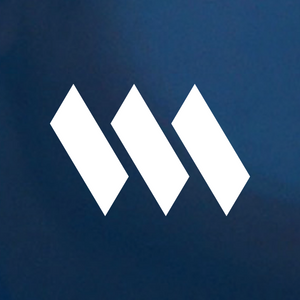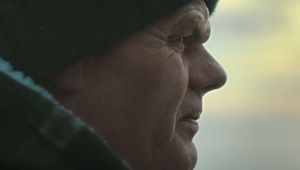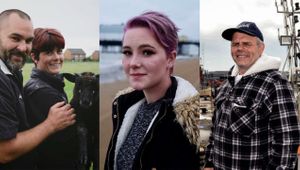
Your Shot: Archer’s Mark on Diving into Toxic Water for an Extraordinary, Underwater Ballantine’s Shoot

In late May, production company Archer’s Mark headed to Tulum in the Yucatán Peninsula of Mexico, for one of the most ambitious shoots we’ve encountered in some time. They’d teamed up with M&C Saatchi Sports & Entertainment and ‘hyper-real’ photographer Benjamin Von Wong to capture an experimental, underwater, photographic project for Ballantine’s Scotch Whisky.
Mexico’s Yucatán Peninsula is famous for cenotes (sinkholes) and hiding 100ft beneath the ancient Angelita denote is a cloud-like layer of hydrogen sulphide which separates salt and fresh water, creating a unique visual phenomenon - an ethereal, flowing ‘underwater river’. Inspired by this and wanting to celebrate his Chinese heritage, photographer Benjamin set to work to create a single underwater image – a mind-boggling, contemporary recreation of a fading ancient tradition, the Chinese Cormorant Fisherman.
LBB’s Addison Capper chatted with Archer’s Mark director William Williamson and head of production Adam Booth about heading under for this extraordinary shoot.
LBB> What were you thinking when this job first came in?
AB> Ballantines immediately felt like a pretty special brief. We always love a production challenge but having the opportunity to produce a truly creative experiment, bring together world-class talent, work with a brave client and agency and shoot in such a beautiful location was always going to be exciting. Then the reality of what we needed to achieve and the time we had kicked in…
LBB> The whole thing was planned in just one month - tell us about that time. What did it involve? What kind of research did you have to undertake?
AB> Beyond the time constraints the main challenge of this type of production is that regardless of all the traditional prep work we could do, the experiment couldn’t be tested until we were in Mexico and in the water. The best we could do was research in as much detail as possible and build a team of the most capable experts and specialists to pull it off when we got there – oh and figure out how to get a stuffed bird through customs without sufficient time to process the required paperwork!
WW> For me my focus was that Ben [Von Wong, photographer] and I were in regular contact and had a very open dialogue about the ideas we were working on throughout the shoot.
Ben’s always on the road so we spent a few weeks working on the idea via Skype (he was in Germany at the time) before he came to London to finalise plans together. It was an incredibly collaborative process throughout, I suppose because we both instantly recognised the pressures the other one was under to perfectly execute the respective briefs we had been given. There were times when what Ben might need for the perfect shot might not match my needs for the film or vice versa. It was key that we were both aware of each other’s plans to avoid any issues when this would happen.
We also both knew that the logistical complications were off the chart, so it was absolutely essential that we planned everything together in minute detail. The challenge when directing a documentary, though, is how to leave enough space within this meticulous plan for spontaneity. We always knew that however detailed our plan was, it would almost certainly change and push us to think on our feet once we landed on location, and this process always really excites me.
LBB> You also put together the specialist team needed for the shoot. Who did you have to pull in?
AB> The first thing we knew we had to tackle was to approach the shoot as two separate entities, basically ‘wet’ and ‘dry’ – each with their own crews. The ‘wet’ team, which had the biggest challenges to overcome, was made up of cave-diving specialists and an experienced underwater film crew led by award-winning DOP Rob Franklin. We’ve worked with Rob before and he is fantastic. He has shot and coordinated some of the most ambitious and complicated shoots ever attempted underwater, but when we approached him with our plans for Ballantine’s, he said that what we were proposing went way beyond anything even he’d tried in the past. We then worked with a team of local divers who were some of the most experienced cave-divers in the world.
LBB> It’s a mind-boggling production. Did you ever worry about its feasibility?
AB> Absolutely. When you are creating such a mind-bogglingly challenging shoot everything was an unknown until we were in the water. For something this challenging, there is absolutely no way anyone could be learning on the shoot. One of the first things we had to overcome was that, even though photographer Ben had worked underwater before, he wasn’t qualified to go to the depth required this shoot. He therefore spent a week in Mexico getting the necessary qualifications, whilst the rest of the crew figured out the logistics behind the shot he had devised.
When setting up the shoot we had very set limitations of just how long we could be underwater for. Staying at these depths, in such poor visibility and with so many moving parts to the shoot meant lots and lots of safety procedures and decompression stops. As things became more complex we had to draft in a handful of other local safety divers meaning our underwater crew steadily grew from 6 to 13 – a lot in this environment.
LBB> Underwater shoots – especially at depths like these! – are naturally a high risk. But this one was especially dangerous due to the hydrogen sulphide cloud that causes the ‘underwater river’. Can you tell us a bit about that and why it’s so dangerous?
AB> The Hydrogen Sulphide layer was the reason we chose this location from every potential dive site around the world, but at the same time it added an extra complication and a very real hazard to our shoot. The hydrogen sulphide causes a cloud like layer that looks like an underwater riverbed complete with leaves and large branches of trees coming out of it. Under certain conditions the sulphide is poisonous and although expert divers regularly visit the cenotes to experience this underwater phenomenon, the necessary precautions had to be undertaken. Thankfully our dive supervisor and DOP Rob Franklyn was able to help us get the very best from it without putting any of our crew in danger.
LBB> You had to build a set 100 feet underwater in darkness. How did you pull that off?
AB> Building and lighting a set 100 feet below the surface was definitely the most challenging element because, even with the most high tech equipment, you’re limited by how long you can stay at that depth for. The underwater team worked on rotation, factoring in all of the necessary decompression times above and below the surface. It was a very intense process for them and in the end took three days and several crisis meetings before we were all confident that the set was safe enough for the shoot to go ahead.
LBB> And tell us a bit about the actual production… How long for and where did it take place? How long was the team actually underwater? Did you have different teams for the above and underwater shoots?
AB> The actual production was based out of Tulum in Mexico. We then travelled a couple of hours daily into the forest to the mouth of the cenote. All in we were there for just under a week with four days of dive time. In addition to the ‘wet’ team we also had a fantastic ‘dry’ team.
WW> Above water I used DOP Will Hanke, who is a frequent collaborator and whose eye I completely trust. He’d set his camera up so that he could move quickly and work in a range of situations and he’d always find innovative ways of finding a beautiful frame whether we were in a roadside taco bar or the midst of a bush fire we’d encountered on the road. It would be contrived to suggest any of these images beforehand but when you have a strong sense of the story you want to tell, you quickly start to see a way of connecting your environment in a way that supports the narrative.
LBB> You worked with free diver Lance Lee Davis. How was he to work with? Free diving is one thing… free diving with a director asking you to do certain things is another…!
AB> Lance was incredible. Despite his experience he was perhaps the most vulnerable person on the shoot. Lance is a Guinness World Record holder and experienced free-diver, but what we were asking him to do was extraordinarily difficult. Again, the illusion created in these images belies just how hard a task we’d set for Lance. In order to give Ben time to work and get his shot, Lance needed to hold his breath for several minutes at a time, control his own buoyancy and strike a pose on the boat. Between takes he’d put a mask on so that Ben could communicate with him through written messages and then apply any changes to his performance. And he was doing this for nearly forty minutes, in 100 feet of freezing, semi-toxic water!
LBB> What were the most memorable moments for you?
WW> Without doubt the most enjoyable aspect of telling this story was the privilege of being able to explore one of the richest environments on the planet with the help of some of the most ingenious professionals I have ever encountered.
Mexico is such an incredibly vibrant place and I really felt at times like we were seeing the very best of it thanks to local support and Ben’s enthusiasm for travelling. As much as the logistical feats we tackled along the way were pretty incredible, I wanted to hold back on the details in the film because that isn’t what the story is about for me. It’s about the image that Ben is trying to create with his images and the voyage he goes on to get there. I really wanted to capture this process without ever drowning in the technical details that underpin his vision.
LBB> What were the trickiest parts and how did you overcome them?
AB> At a depth of 100 feet it gets seriously dark, especially in this particular cenote with its unusual mix of fresh water, salt water and the hydrogen sulphide cloud. There’s virtually no daylight down there so we always knew we’d have to light the set ourselves, which meant building and lowering the rig out there in the wild and powering from portable generators in the jungle.
Setting up the lights was the easy part, the difficult bit is tweaking or finessing their effect underwater, where conditions are so challenging and communication is almost impossible. The main lighting rig was lowered from the surface, meaning we had to get messages back to the surface if we wanted the lights tweaking and then hope the team up there could execute exactly what we needed. We then had more lights being moved manually underwater by divers.
Even the lights we took down there with us didn’t penetrate very far so all of our cameras had to be set up with the fastest lenses we could take underwater and all of the operators were shooting wide open and pushing their sensors to the limit. We were shooting on Red Dragon 6K, which thankfully dealt very well with the conditions. It’s also quite compact even in the underwater housing, which meant Rob was able to move around and get all the shots we needed in a very short space of time.










